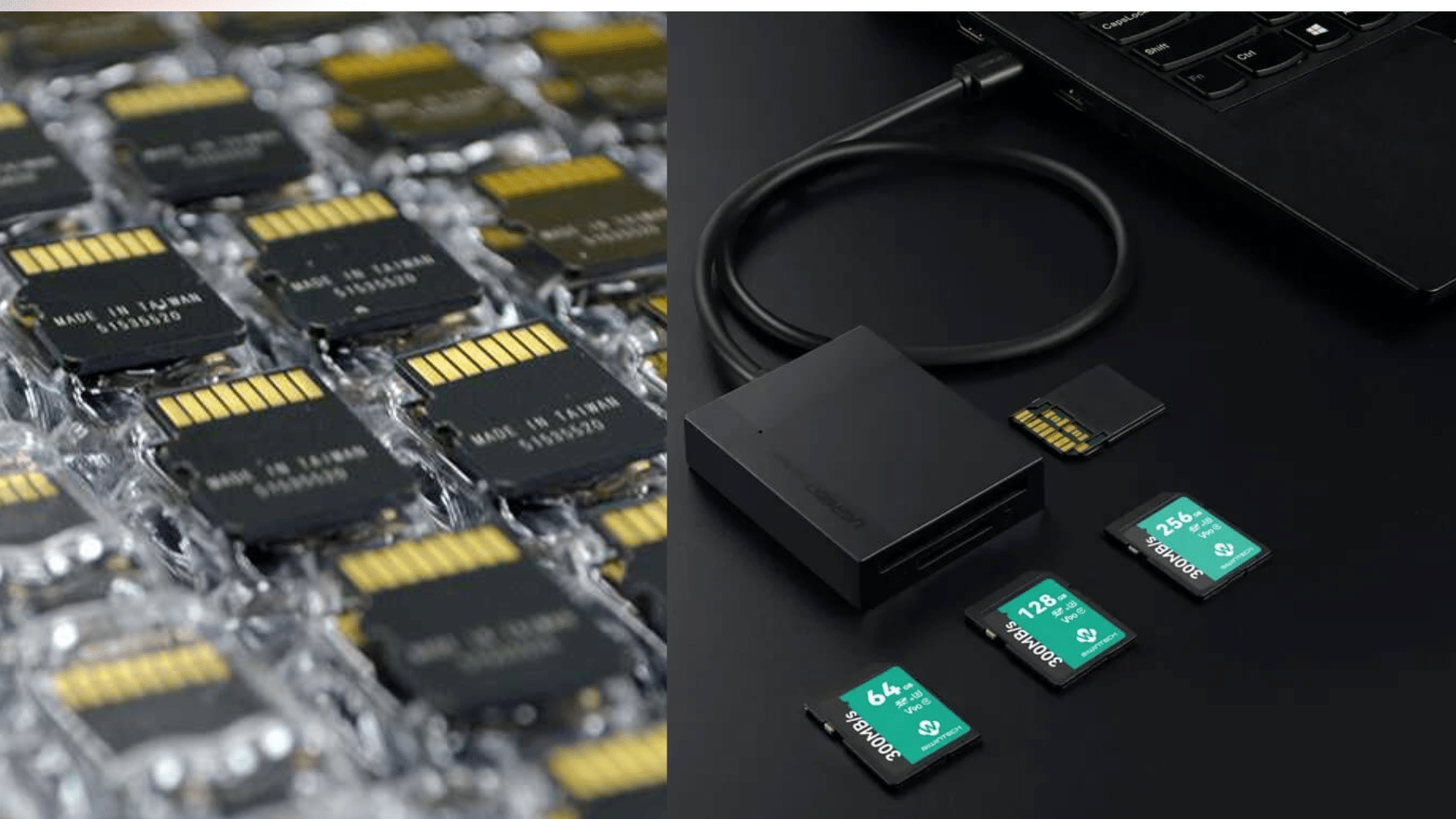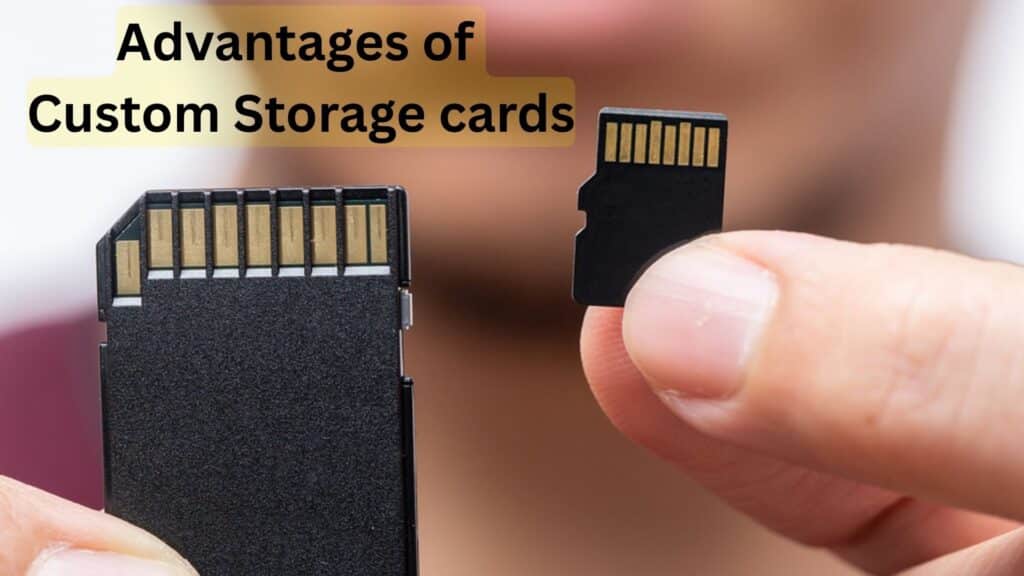OEM Memory Card Manufacturing: What You Need to Know

The demand for reliable storage solutions continues to grow, making Compact Flash memory card, TB SD card, and SD memory card manufacturing an essential part of the tech industry. Whether you are a brand looking to expand your product lineup or a business seeking a trusted supplier, understanding the OEM (Original Equipment Manufacturer) memory card production process is crucial. From selecting the right memory type to ensuring high-quality standards, this guide will help you navigate the complexities of OEM manufacturing in the memory card industry.
Understanding OEM Memory Card Manufacturing
OEM manufacturing involves producing memory cards under a third-party brand’s name, offering businesses a cost-effective way to deliver high-quality storage solutions. This process enables brands to customize Compact Flash memory cards, TB SD cards, and SD memory cards based on specific performance requirements, branding needs, and customer demands.
Why Choose OEM Manufacturing?
- Cost Efficiency: OEM production allows businesses to benefit from bulk manufacturing, reducing per-unit costs.
- Customization: Companies can modify storage capacity, speed, branding, and security features.
- Faster Time to Market: OEM partnerships eliminate the need for extensive R&D, accelerating product launches.
Types of Memory Cards in OEM Manufacturing
Before selecting an OEM manufacturer, it’s essential to understand the different types of memory cards available in the market.
1. Compact Flash Memory Card
Compact Flash (CF) memory cards are widely used in professional photography, videography, and industrial applications due to their durability and fast data transfer speeds.
- High Reliability: CF cards are designed for rugged environments, making them ideal for industrial automation and aerospace applications.
- Fast Read/Write Speeds: Many CF cards support Ultra DMA (UDMA) modes, ensuring quick data transfer.
- Longer Lifespan: Compared to standard SD memory cards, CF cards have a longer lifespan due to their robust design.
2. TB SD Card (Terabyte SD Card)
The rise of TB SD cards has transformed high-capacity storage, making them an essential component for professionals handling large data volumes.
- Massive Storage Capacity: TB SD cards provide storage of 1TB or more, perfect for 4K/8K video recording and data-heavy applications.
- High-Speed Performance: Many TB SD cards use UHS-II or UHS-III technology for ultra-fast read/write speeds.
- Compatibility: Widely used in cameras, drones, gaming consoles, and mobile devices.
3. SD Memory Card
SD memory cards are the most common type of removable storage, offering flexibility for various consumer and professional applications.
- Variety of Capacities: Ranges from 2GB to several terabytes, catering to different needs.
- Class Ratings: Cards are available in Class 2, 4, 6, 10, UHS, and V90 to meet different speed requirements.
- Broad Usage: Ideal for smartphones, tablets, cameras, and IoT devices.
Key Factors in OEM Memory Card Manufacturing
When selecting an OEM manufacturer for Compact Flash memory cards, TB SD cards, and SD memory cards, several factors must be considered.
1. Memory Type and Quality
The performance and lifespan of a memory card depend on the type of NAND flash used.
- SLC (Single-Level Cell): Highest durability and speed, best for industrial use.
- MLC (Multi-Level Cell): Balanced performance and cost, suitable for prosumers.
- TLC (Triple-Level Cell): Most cost-effective, used in consumer products.
- QLC (Quad-Level Cell): Higher storage density but lower durability.
2. Read and Write Speeds
Speed is a critical factor for high-performance applications. TB SD cards and Compact Flash memory cards with high-speed ratings improve workflow efficiency for photographers, videographers, and gamers.
- UHS-I / UHS-II: Ultra High-Speed classifications for SD memory cards and TB SD cards.
- V-Class Ratings: Essential for video applications (V30, V60, V90).
- NVMe-Based CF Cards: Used for professional-grade CFexpress cards.
3. Durability and Reliability
Memory cards are often exposed to extreme conditions. Ensure that your OEM memory cards are:
- Waterproof and Shockproof: Essential for outdoor and industrial use.
- Temperature-Resistant: Must function in extreme heat and cold.
- X-Ray and Magnet Proof: Protects data from environmental hazards.
4. Branding and Customization
OEM manufacturing allows brands to personalize Compact Flash memory cards, TB SD cards, and SD memory cards to fit their market positioning.
- Logo Printing: Custom branding on the card’s surface.
- Firmware Customization: Unique software features for security and optimization.
- Packaging Options: Custom retail packaging for brand visibility.
5. Compliance and Certification
Ensuring compliance with industry standards is crucial for global distribution. Common certifications include:
- CE, FCC, and RoHS: Compliance with environmental and safety regulations.
- ISO 9001 and 14001: Quality and environmental management systems.
- JEDEC and SD Association Standards: Ensuring compatibility with SD card specifications.
Choosing the Right OEM Manufacturer
Selecting a reliable OEM manufacturer for Compact Flash memory cards, TB SD cards, and SD memory cards requires evaluating the following:
1. Manufacturing Capabilities
- State-of-the-Art Facilities: Advanced production lines ensure high-quality output.
- Automated Testing: Ensures consistency and reliability in performance.
- Supply Chain Efficiency: Reliable sourcing of NAND flash memory.
2. Customization and Support
- Technical Support: OEMs should offer firmware updates and troubleshooting assistance.
- Customization Options: Ability to modify memory card specifications based on market needs.
- After-Sales Service: Warranty and replacement policies.
3. Cost and Scalability
- Competitive Pricing: Bulk orders should provide significant cost advantages.
- Scalability: Manufacturer’s ability to meet demand fluctuations.
- Global Shipping & Logistics: Reliable distribution networks.
Future Trends in OEM Memory Card Manufacturing
1. Growth of TB SD Cards
The adoption of TB SD cards will continue to rise as data-heavy applications like 8K video, VR, and AI processing become mainstream.
2. Compact Flash vs. CFexpress
While Compact Flash memory cards remain relevant, CFexpress is gaining traction due to its PCIe interface, delivering significantly faster speeds.
3. Sustainable Memory Card Production
OEM manufacturers are increasingly focusing on eco-friendly materials, energy-efficient production, and recyclable packaging.
4. Enhanced Security Features
Future SD memory cards will feature built-in encryption, biometric authentication, and blockchain-based data integrity checks.
Conclusion
OEM manufacturing offers businesses a cost-effective way to enter the memory card market with Compact Flash memory cards, TB SD cards, and SD memory cards. By understanding key factors like memory type, speed, durability, branding, and compliance, companies can successfully partner with reliable OEMs to deliver high-quality products. As technology advances, staying ahead of trends like CFexpress, sustainable production, and AI-driven storage optimization will be crucial for long-term success.



